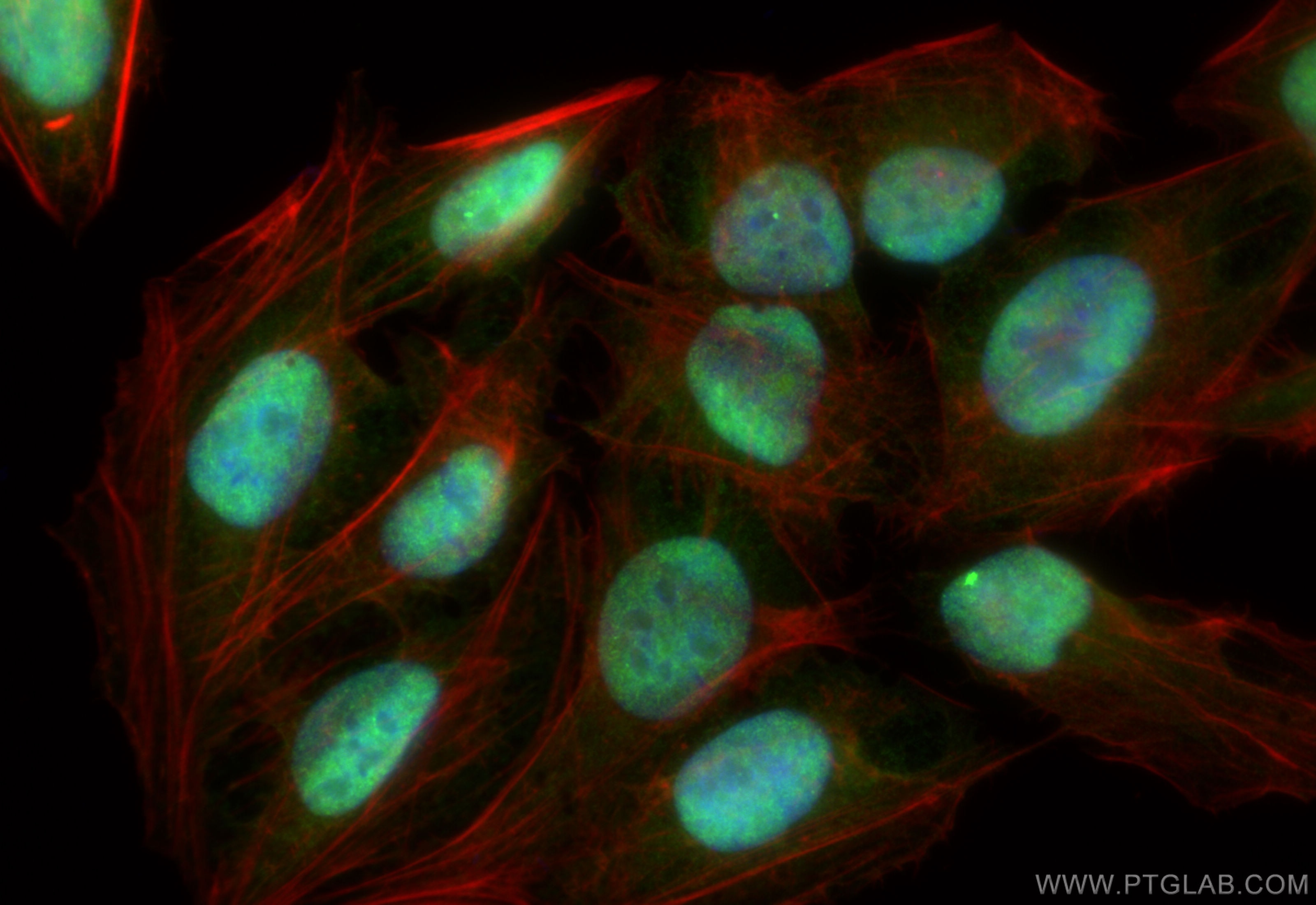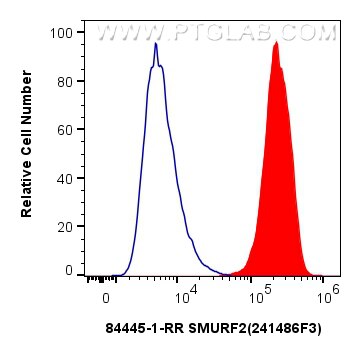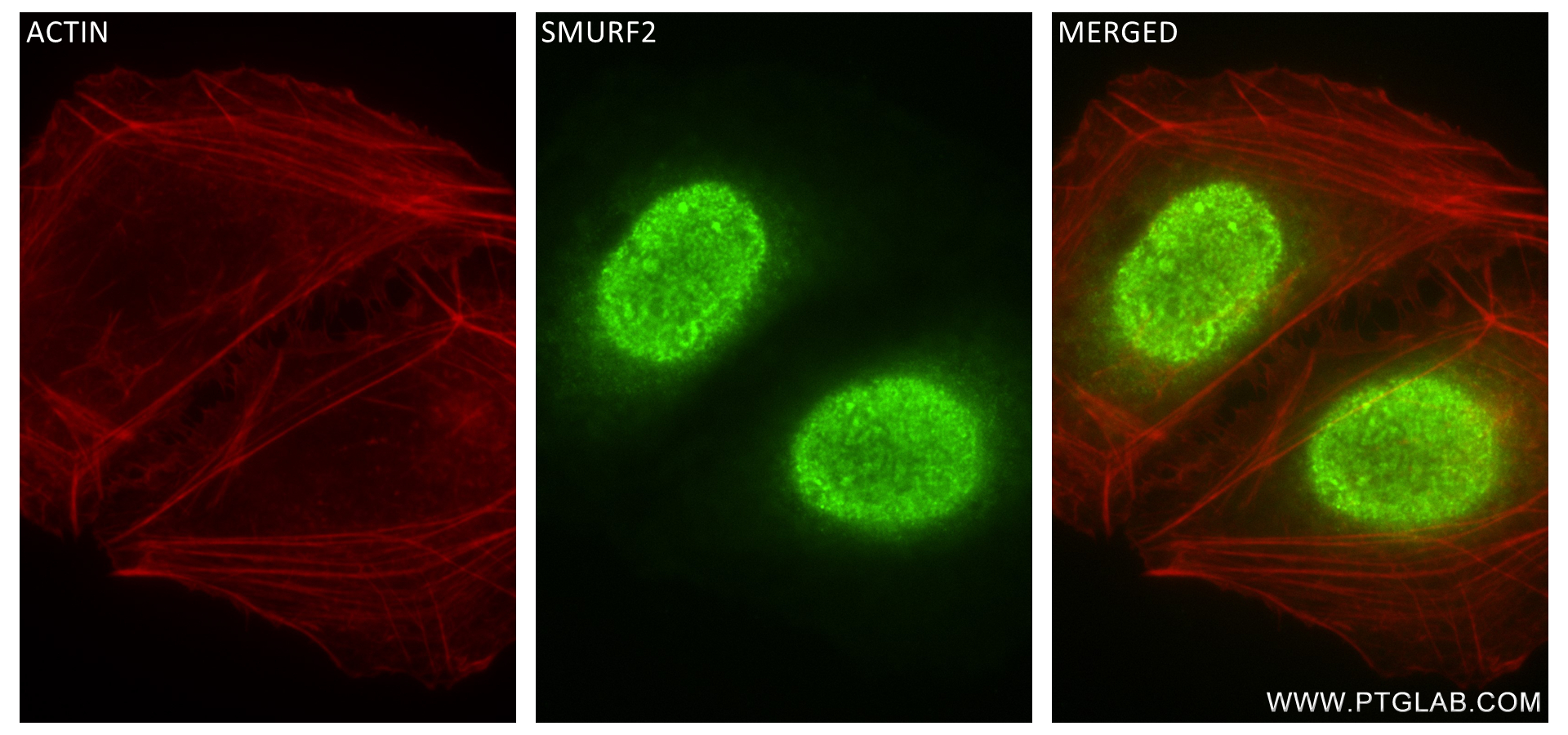Tested Applications
| Positive IF/ICC detected in | U2OS cells |
| Positive FC (Intra) detected in | U2OS cells |
Recommended dilution
| Application | Dilution |
|---|---|
| Immunofluorescence (IF)/ICC | IF/ICC : 1:125-1:500 |
| Flow Cytometry (FC) (INTRA) | FC (INTRA) : 0.25 ug per 10^6 cells in a 100 µl suspension |
| It is recommended that this reagent should be titrated in each testing system to obtain optimal results. | |
| Sample-dependent, Check data in validation data gallery. | |
Product Information
84445-1-RR targets SMURF2 in IF/ICC, FC (Intra), ELISA applications and shows reactivity with human samples.
| Tested Reactivity | human |
| Host / Isotype | Rabbit / IgG |
| Class | Recombinant |
| Type | Antibody |
| Immunogen | SMURF2 fusion protein Ag33419 Predict reactive species |
| Full Name | SMAD specific E3 ubiquitin protein ligase 2 |
| Calculated Molecular Weight | 748 aa, 86 kDa |
| GenBank Accession Number | BC093876 |
| Gene Symbol | SMURF2 |
| Gene ID (NCBI) | 64750 |
| RRID | AB_3671970 |
| Conjugate | Unconjugated |
| Form | Liquid |
| Purification Method | Protein A purfication |
| UNIPROT ID | Q9HAU4 |
| Storage Buffer | PBS with 0.02% sodium azide and 50% glycerol , pH 7.3 |
| Storage Conditions | Store at -20°C. Stable for one year after shipment. Aliquoting is unnecessary for -20oC storage. 20ul sizes contain 0.1% BSA. |
Background Information
SMURF2 is a HECT domain E3 ubiquitin ligase involved in degradation of SMADs,TGF-beta receptor,and other substrates.It also functions in regulation of neuronal and planar cell polarity, induction of senescence, and tumor suppression(PMID:22231558).SMURF2 associates constitutively with SMAD7 and it is nuclear, but binding to SMAD7 induces export and recruitment to activated TGFBR, where it causes degradation of receptors and of SMAD7 via proteasomal and lysosomal pathways(PMIF:11163210).
Protocols
| Product Specific Protocols | |
|---|---|
| IF protocol for SMURF2 antibody 84445-1-RR | Download protocol |
| FC protocol for SMURF2 antibody 84445-1-RR | Download protocol |
| Standard Protocols | |
|---|---|
| Click here to view our Standard Protocols |







